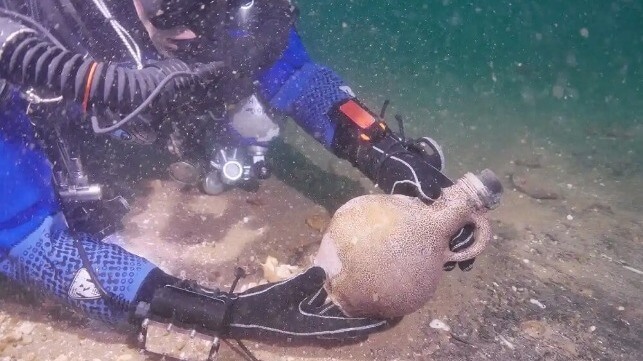UK "Marks" Historic Shipwreck Sites to Trace Thefts

Following increasing cases of shipwrecks vandalism by treasure hunters, archeologists have devised a new “game changing” strategy that involves underwater forensic marking of artifacts to give them greater protection from theft.
Historic England says that shipwrecks and their artifacts at England’s 57 most protected wreck sites will now get enhanced security thanks to the development of a product for forensic marking of historical material.
The forensic product has been trialed on dives and is said to be similar to the kind of traceable products used to mark lead on church roofs at risk of theft, which allows police to trace the object back to a particular site. By applying the product that is not visible to the naked eye to artifacts, archeologists and the police will be able to know the origin of any stolen item from the protected wreck sites.
The forensic product has been developed by MSDS Marine, a British marine and coastal contractor that specializes in archaeological projects. MSDS Marine started work on the product in 2016 before Historic England and the Cultural Heritage Agency of the Netherlands (RCE) came on board to fund it.
“This will act as a clear deterrent to those looking to unlawfully lift and remove historic material," said Mark Harrison, Head of Heritage Crime Strategy at Historic England. "If someone breaks the law and removes any property, the new markings will give police the ability to link the offender to the crime scene and implement criminal proceedings."
The need to develop the forensic marking became more urgent in 2021 following the damage to the site of the 17th-century Dutch warship Klein Hollandia, which lies at a diver-accessible depth of 32 meters of water. The wreck, which was discovered in 2019 and definitively identified early this year, is laden with treasures like cannons, Italian marble tiles and pieces of Italian pottery.
The site of the Klein Hollandia is one of those being marked, and a bronze cannon is among the first items to be applied with the protective marking solution.
“We are confident that forensic marking will help protect important cultural heritage such as the wreck of the Klein Hollandia. Without this protection, this heritage will disappear,” said Martijn Manders, Manager of RCE’s International Program for Maritime Heritage.
The Protection of Wrecks Act 1973 grants the highest level of protection to these 57 sites, meaning that only licensed divers are allowed to access them. The wrecks represent a small minority of all sites: there are 37,000 known shipwrecks off England’s coastline.
No comments:
Post a Comment